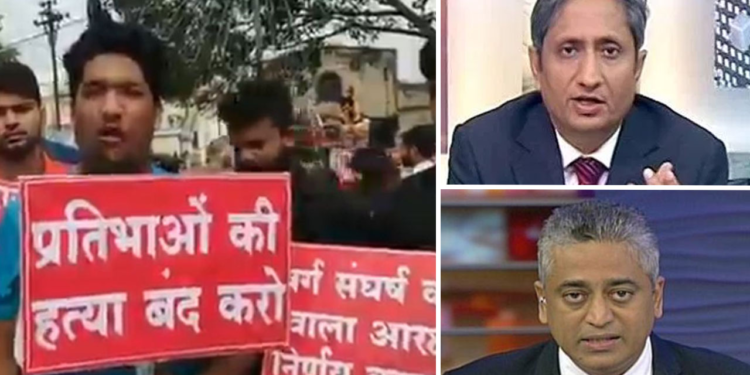As per a Parrikar report, the youth of Bilaspur took to streets this Sunday in protest against the new reservation policy intiated by the Chhattisgarh government. The report stated general category students have protested against the recent hike in reservation in the state. The protestors demanded that reservation should be based on economic criterion and not on the basis of caste. It also stated that protestors alleged that this move by the government would create discord within the society. The protestors also claimed that the sudden hike in reservation would also create a new deprived category of people within the society. One of the protestors went on to say that there was no demand or pressure from within the society for any change in the reservation policy and still this decision was taken.
It is important to mention here that during an Independence Day event this year, Chhattisgarh CM Bhupesh Baghel announced hike in reservation. Under the new reservation policy, 32 per cent for STs, 13 per cent for SCs and 27 per cent reservation would be given to OBCs. This takes the quantum of reservation to 72 per cent. TFIPOST had earlier published a story on the hike in reservation, in which it was stated that the hike concerned only vertical reservation which far exceeded the 50 per cent ceiling. Add to it, horizontal reservation in the form of ex-servicemen quota, physically handicapped quota, etc. and the total number of unreserved seats would constitute a lean minority of the total number of vacancies. The question which then arises is whether reservations, which were seen as an affirmative action to advance equality are being used only as a political tool.
It is pertinent to mention here that the mainstream media has maintained absolute silence in background of the protest rally that took place this Sunday. Leave alone the question of the mainstream media starting a discussion on this issue through editorials or long op-eds, it has not even reported about the protests properly. It is as if the mainstream media is oblivious to the entire development. There are a number of intricacies that deserve attention including Dr. B.R. Ambedkar’s opinion that reservation must be confined to a ‘minority of seats’. One can only wonder if reservation of 72% seats in Chhattisgarh or 68% reservation (excluding 10% EWS quota) in Maharashtra actually constitute a ‘minority of seats’. Moreover, the manner in which the 50% cap is being taken lightly and breached frequently in the name of exceptions does not seem to be in line with the Supreme Court judgment of 1993 (Indra Sawhney v Union of India, AIR 1993 SC 477) and this also ought to be discussed by those who shape public discourse. Mainstream media, being the fourth estate of democracy as it is popularly called, is obliged to start such discussions but it has failed to even take the first step on this issue. It has not even taken cognisance of the entire issue.































